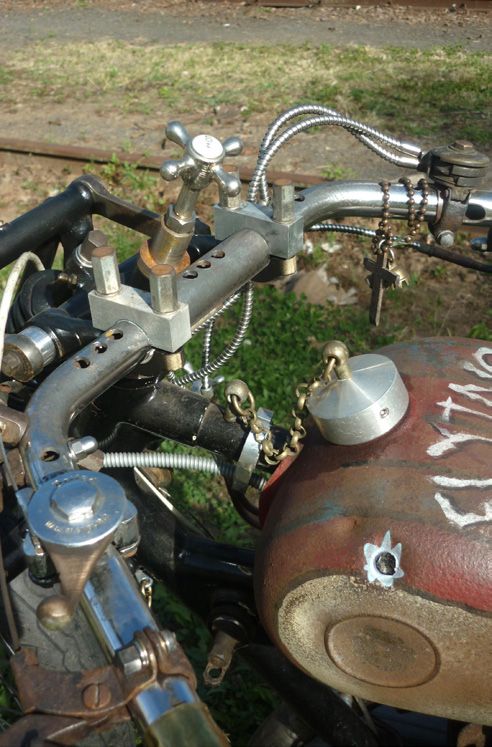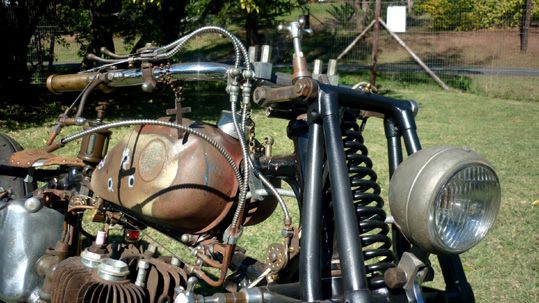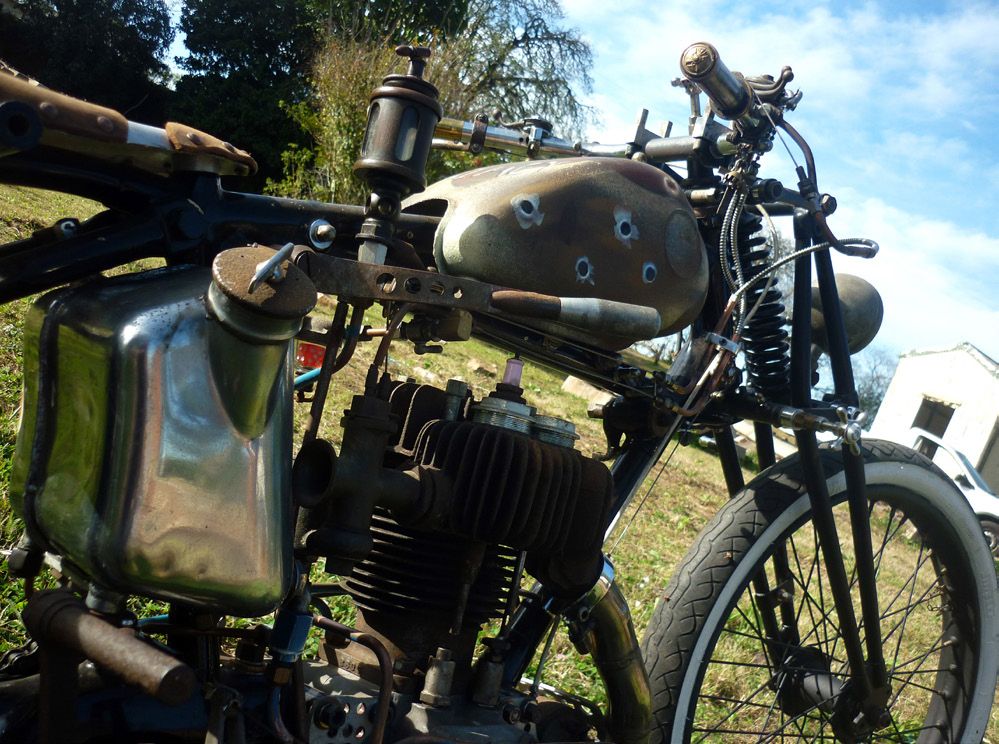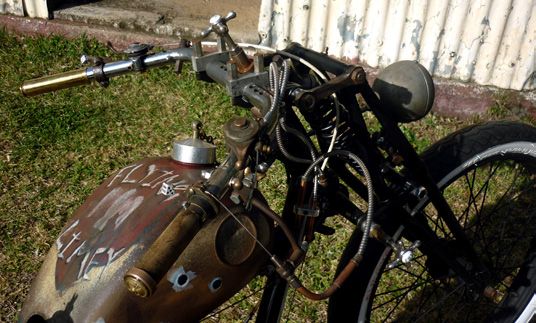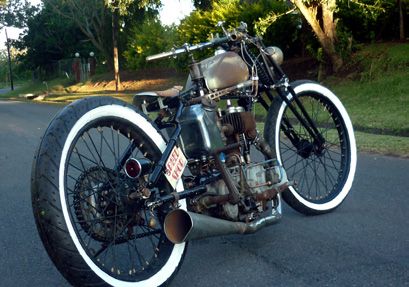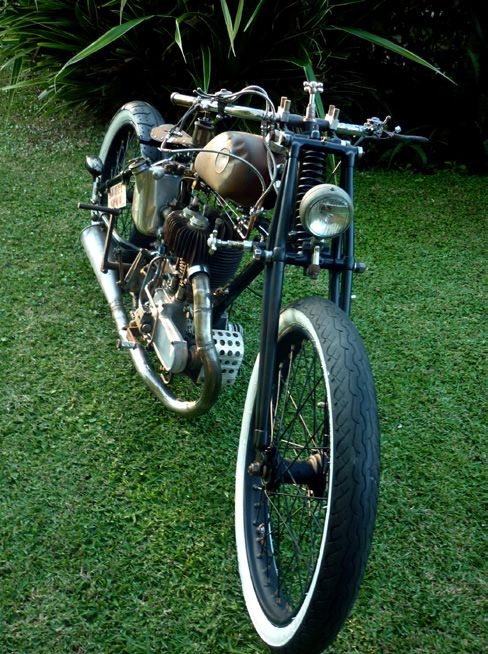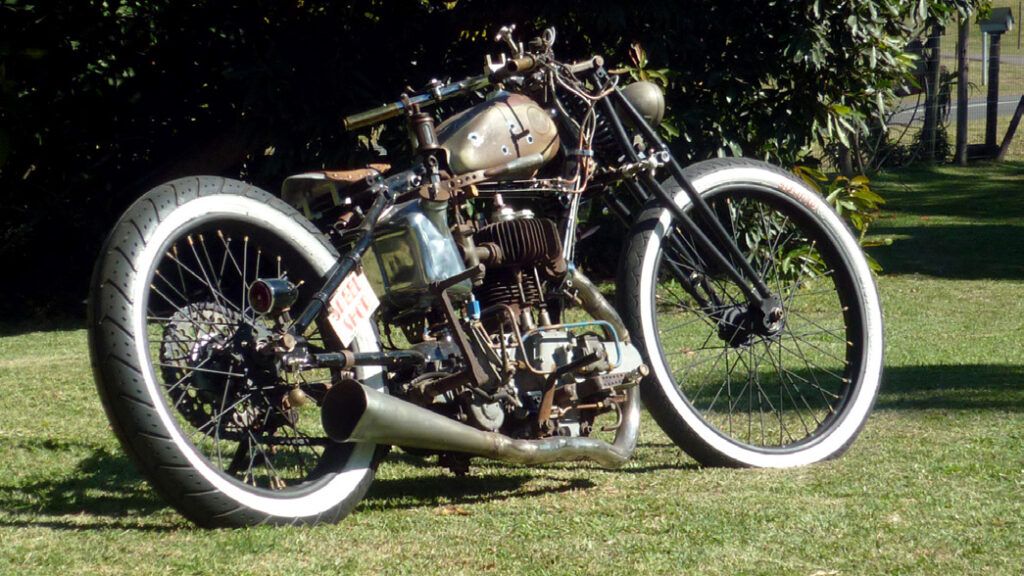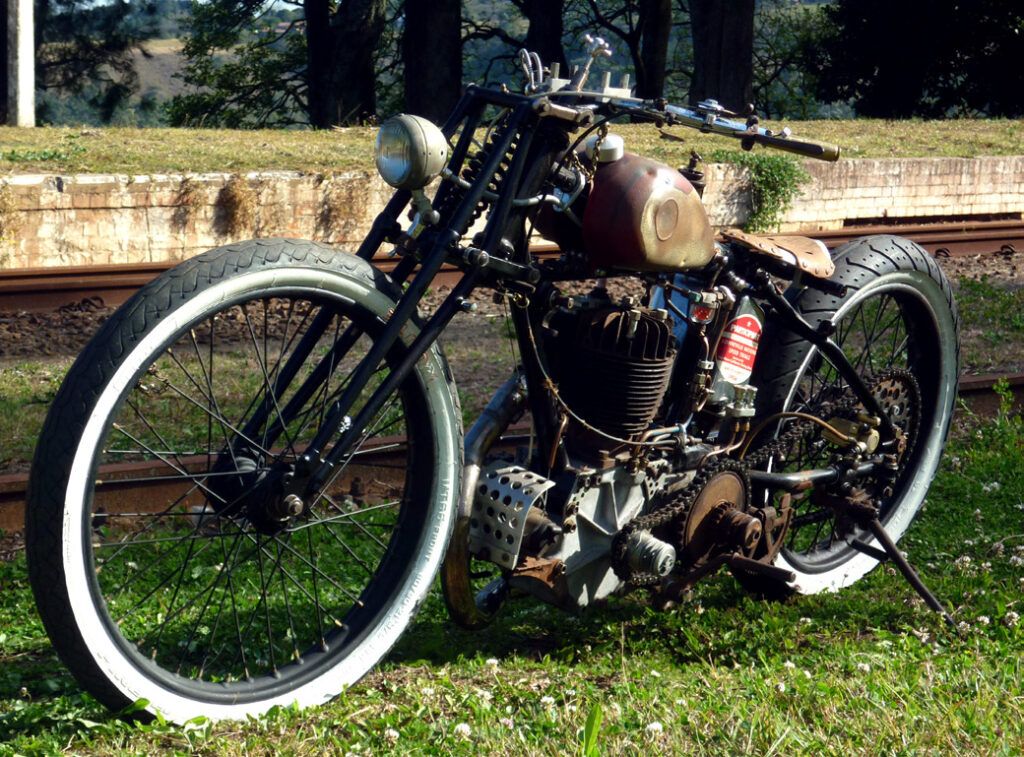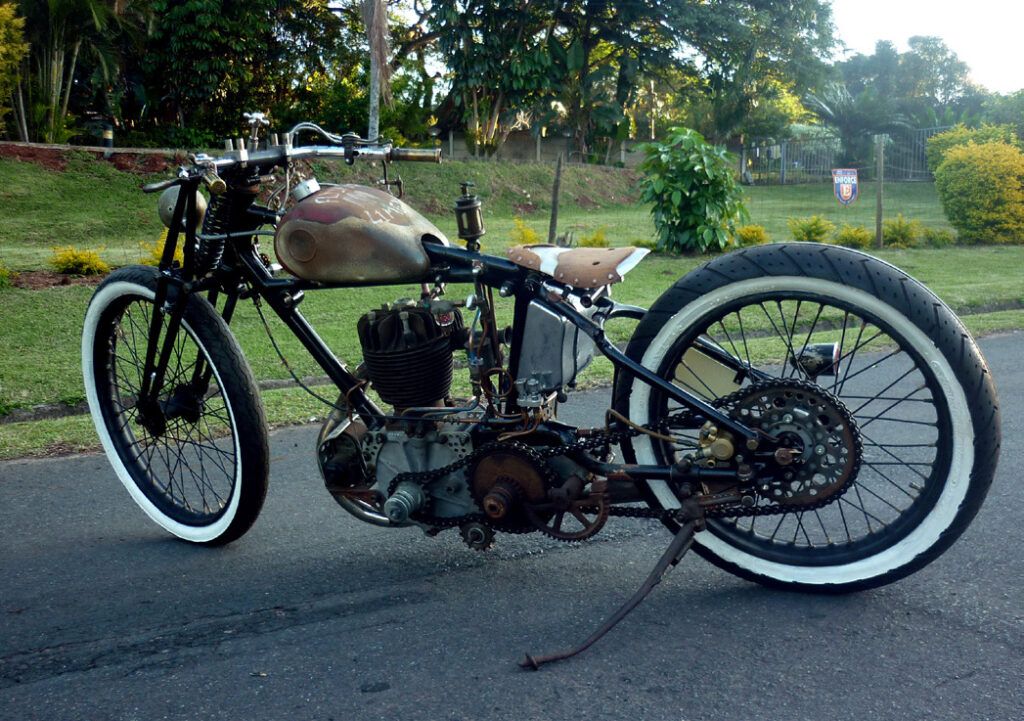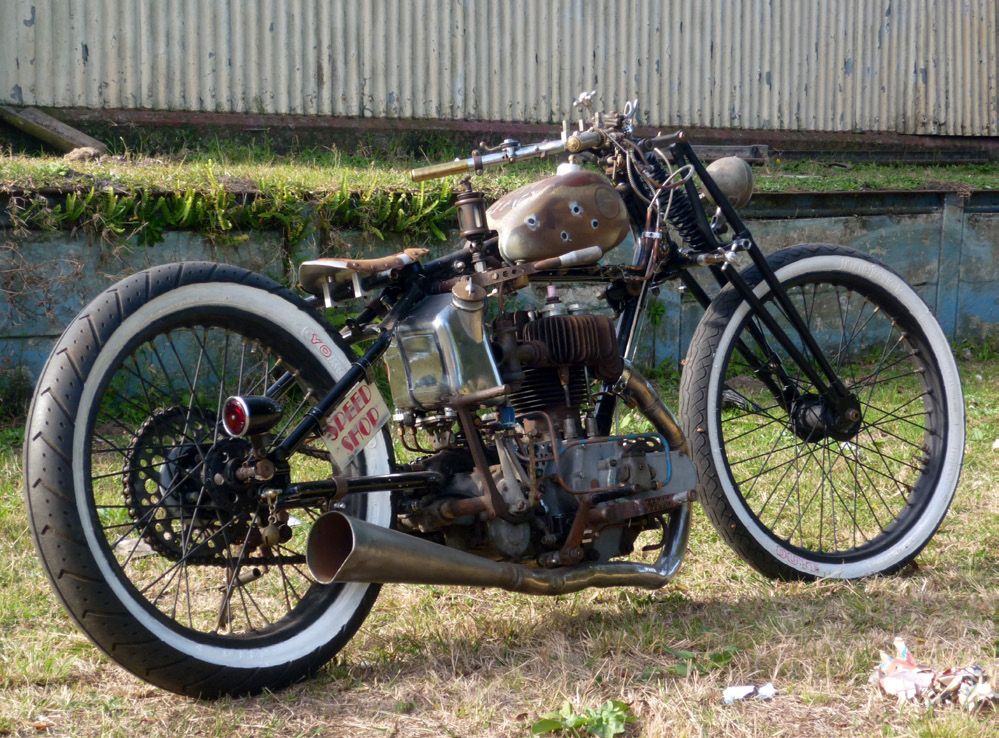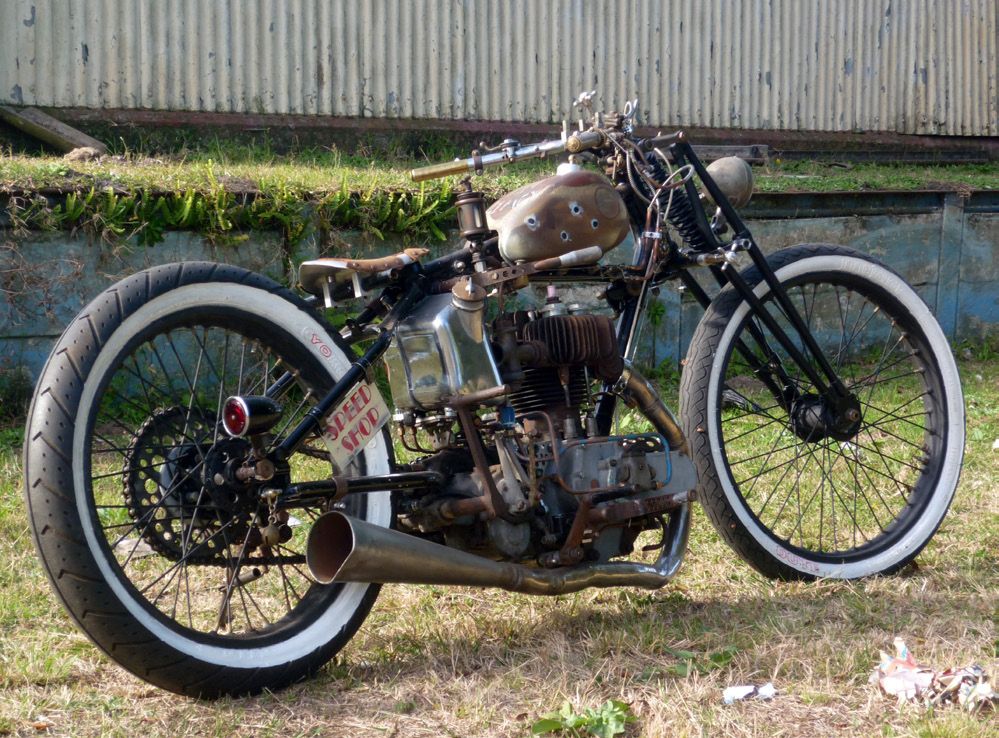
I DRAW INSPIRATION FROM A LOT OF PLACES,FOR EXAMPLE, THE CANADIAN1930 FORDCOUP CALLED LITTLEBOY, AFTER-HOURSBIKES, SLIMSFAB, BILLY LANESHENDERSON, AND GENERALLY PEOPLE DOING IT DIFFERENTLY.
Some motorcycles whisper their history. Others wear it like a badge of honour. The Flying Limey does both. Built around a rare 1927 AJS 500 side-valve single, model K9, this machine is the kind of creation that defies neat categorisation. Some call it a rat bike, but owner-builder Eugene Watson prefers the term “original hot rod” — the sort of stripped-down, go-fast special that could easily have prowled the streets in the 1930s.
It started with just a frame, an engine and a three-speed box, bought from a friend. The AJS frame itself is stock, though Eugene couldn’t resist adding a few fabricated lugs, puddle-welded in so seamlessly they look like they’ve been there since day one. The patina is all intentional — the kind of aged, barn-find aesthetic that takes decades to happen naturally, or a careful hand to recreate.
The oil tank is a Norton unit that slotted in perfectly, while the fuel tank is a mystery moped piece of unknown origin. Eugene hand-made the cap and chain fittings, kept the surface rust, and added some period-style paint and lettering before ageing it to match the bike’s time-worn skin. The bars are his own creation, complete with a left-hand grip made from a large WW2 cannon shell. Even the throttle is a vintage brass unit with all the mechanicals exposed — a little steampunk, a lot of history.
The detailing is obsessive. Old, tatty control cables, shaped copper pipework scavenged from ancient machinery, and tiny hidden surprises like red dice in the fuel filter and miniature dice crimped to the cable ends. Every component tells a story. The British 19-inch rear wheel runs a modern sprocket with an integrated brake — the “sprotter” setup — and a quad-bike master cylinder for a cleaner look. Up front is a 21-inch cartwheel from a street vendor, a lucky find that gives the bike its unmistakable stance.
The girder forks are early British units, raked at the lower linkages to stretch the frame a touch. Nickel-plated handles, picked up at Cars in the Park in Maritzburg, were repurposed for the steering and suspension dampers — a nod to an idea Eugene admits stealing from custom legend Billy Lane. The seat pan was shaped from aluminium, part-covered in leather, and paired with a modified spot lamp for the headlight and a swap-meet tail light from Modderfontein. No mudguards, because in Eugene’s words, “this is not a girl’s bike.”
The engine plates are drilled for a proper old-racer look, while the exhaust is a Frankenstein blend of Harley 10/12 pipes feeding into a flat-side racing megaphone. The side stand is a Royal Enfield desert type, mounted at the rear, and the bike is peppered with early-style nuts and bolts that vary in head thickness — just like they did back in the day. Even the “Speed Shop” sign, painted in art deco script, is a hand-made touch to set the tone.
Eugene’s influences range from Canadian hot rods like the 1930 Ford coup “Littleboy” to the raw style of Billy Lane’s Henderson builds. He first unveiled The Flying Limey at Cars in the Park, Maritzburg, in 2013, where it drew a flood of positive reactions. Later that year, it took home “Best Rat Bike” at Ink and Iron in Pinetown — a win that left him, in his words, “properly chuffed.”
For Eugene, the goal is to build machines that capture moments in history. He’s been collecting old parts since childhood and has a network of friends who do the same. Importantly, he avoids destroying original components, preferring to use existing mounting points so the bike could, if desired, be returned to original spec. It’s his way of honouring heritage while celebrating creativity.
Not everyone gets it. Some people see art, others see junk, and some just don’t see the point at all. But for Eugene, that’s beside the point. “At the end of the day,” he says with a grin, “it makes me happy.”

